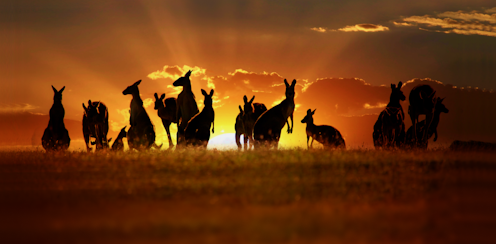Climate change threatens Australian tourism more than is widely believed. Here’s why
- Written by Freya Higgins-Desbiolles, Adjunct professor and adjunct senior lecturer in tourism management, University of South Australia

Right now, Australia is one of the top five[1] tourist destinations in the world, a distinction the World Economic Forum says it shares with only the United States, France, Spain and Japan.
So important is tourism to Australia’s economy that the best estimates are it employs 655,000[2] people, 12 times as many as Australia’s coal industry[3].
And most of them are employed in regional locations[4], where jobs are scarce.
This month a report by the Zurich insurance group and the economic consultancy Mandala found half[5] of Australia’s top 178 tourism assets were at risk from foreseeable climate change.
There are reasons to believe its findings underplay what we are facing.
All major airports, all national parks at risk
The Zurich-Mandala report examines the impact of a 2⁰C increase in global temperatures on only eight so-called “climate perils”: wind, flood, heat, storm, drought, bushfire, hail and rain.
It found that more than half of Australia’s top tourism assets faced a “significant risk from multiple perils” over the next 25 years, including all of Australia’s major airports.
Scheduling disruptions and the closure of airports in extreme weather conditions were set to have major impacts on the transport of goods, the transport of tourists and accessibility for emergency services.
All of Australia’s vineyards, national parks, scenic roads and railways were at risk.
Queensland had the highest number of sites facing significant risk (79%) followed by Western Australia (69%) and the Northern Territory (63%).
The report uses the impact of the 2019-20 black summer bushfires[6] to estimate that 176,000 jobs might be at risk nationwide from predictable climate change, most of them outside of Australia’s capital cities.
Multiple and interacting threats
Here is why I am fearful that the report underplays the threat Australia’s tourism industry is facing.
There are many more threats to tourism from climate change than wind, flood, heat, storm, drought, bushfire, hail and rain.
One is the threat to biodiversity. Iconic animals and habitats are an important part of Australia’s brand.
Three billion[7] animals were killed or displaced in the black summer bushfires.
The deaths caused loss and grief[8] that risk indexes are incapable of capturing, but that nonetheless might make tourism less attractive.
And biodiversity helps in another way by protecting against bushfires[9], meaning that as species vanish, other risks to tourism climb in ways that aren’t captured in the assumptions used to evaluate risk.
Threats unexamined
What makes holiday locations unattractive is hard to measure, but is fed by extreme weather events.
Although temporary, the smoke and heat from the 2019-20 bushfires made parts of Sydney, Melbourne and Canberra almost unlivable for a while, damaging the reputations of Australian capital cities in a way that is probably ongoing[10].
Another curious omission, especially curious given that the report was prepared by an insurance company, is the damage extreme weather events do to the insurability of tourism assets.
The report is also silent on the effort to reduce carbon emissions on Australia’s desirability as an international destination.
For many tourists, air travel is the only way to get to Australia and it is likely to become more expensive and also less attractive as tourists try to reduce their carbon footprints[12].
Australia might increasingly become an Australian rather than an international destination.
Our biggest upcoming international promotion, the 2032 Brisbane Olympic Games, might lose a good deal of its shine, with Queensland tourism assets at the greatest risk from climate change, and those risks set to climb over time.
The higher the temperature the bigger the threats
Zurich and the Mandala consultancy are to be commended for identifying 178 top tourism assets and examining eight types of risk they face.
Their finding that just over half of them face serious threats from those risks is likely to be an underestimate because it excludes other risks and fails to examine the way in which some risks can intensify others.
And they will be an underestimate if global temperatures climb by more than 2⁰C.
The report says if global temperatures climb to 3⁰C above pre-industrial levels, 80% of the Australian sites it examined will face serious threats.
Australia could attempt to limit the increase in global temperatures by taking up the opportunity to co-host the 2026 UN climate talks[13] with Pacific nations.
It would give us a shot at making a difference and drawing attention to our present status as one of the world’s top tourism destinations.
Read more: It's a big deal if Australia and the Pacific are chosen to host UN climate talks. Here's why[14]
References
- ^ top five (www.weforum.org)
- ^ 655,000 (www.tra.gov.au)
- ^ Australia’s coal industry (www.abs.gov.au)
- ^ regional locations (www.zurich.com.au)
- ^ half (www.zurich.com.au)
- ^ black summer bushfires (www.aph.gov.au)
- ^ Three billion (www.abc.net.au)
- ^ loss and grief (www.theguardian.com)
- ^ protecting against bushfires (www.australianwildlife.org)
- ^ probably ongoing (www.smh.com.au)
- ^ Monkeystock/Shutterstock (www.shutterstock.com)
- ^ carbon footprints (www.sciencedirect.com)
- ^ 2026 UN climate talks (theconversation.com)
- ^ It's a big deal if Australia and the Pacific are chosen to host UN climate talks. Here's why (theconversation.com)
Authors: Freya Higgins-Desbiolles, Adjunct professor and adjunct senior lecturer in tourism management, University of South Australia







